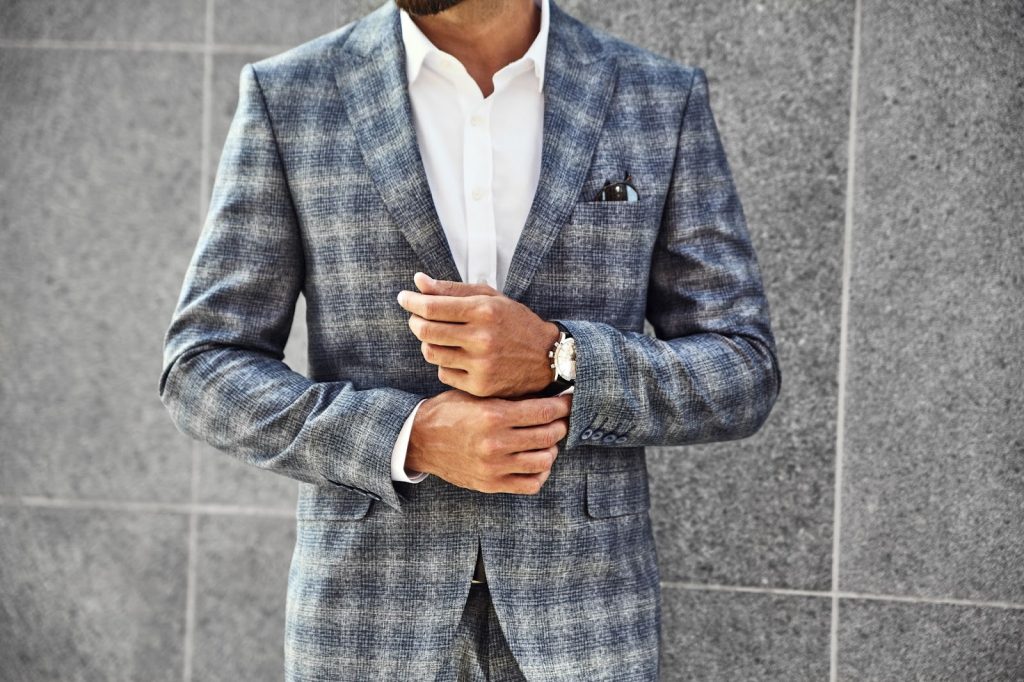If you’re deciding between a wool or polyester suit for your next professional look, the answer depends on the occasion, climate, comfort preferences, and how much durability you need.
This comparison of wool vs polyester suit fabrics will walk you through the key differences to help you find the right business suit material for your lifestyle.
We’ll also highlight how Baoxiniao’s suit collections offer tailored solutions in both categories.

The choice of business suit fabric affects everything from how the suit looks and feels to how well it performs over time.
Whether you’re heading into a boardroom, meeting a client, or attending a summer wedding, understanding the properties of each fabric is essential.
Wool and polyester are two of the most widely used materials in men’s suiting, but they serve very different purposes.
While wool business suits are prized for luxury and natural breathability, a polyester suit appeals to those seeking budget-friendly, low-maintenance options.
Let’s dive into how these fabrics compare.
Wool suiting has long been a favorite among professionals and high-end tailors for good reason. Wool is a natural fiber known for its breathability, softness, and temperature-regulating properties.
Take, for example, Baoxiniao’s wool light green blazer—a perfect integration of classic styling and all-season wearability.

Its wool-blend suit design balances elegance with modern tailoring, which is ideal for business and travel.
Polyester is a synthetic fiber commonly used in ready-to-wear fashion. It’s often used for its affordability and easy maintenance, but it comes with some trade-offs.
Baoxiniao’s ready-to-wear polyester blend suits combine practical style and resilient tailoring—perfect for growing companies that need durable workforce uniforms.

| Feature | Wool Suit | Polyester Suit |
| Breathability | High | Low |
| Price | Higher | Lower |
| Maintenance | Dry clean, careful ironing | Machine-washable, wrinkle-resistant |
| Texture | Soft, rich drape | Smooth, slightly rigid |
| Longevity | Long-lasting if cared for | Long-lasting but may pill over time |
| Warmth | Yes, especially in winter weights | Yes, but may overheat in warm areas |
| Sustainability | Natural and biodegradable | Synthetic, but some recycled options |
Choosing the right business suit material depends on your usage.
Wool suits are excellent for client meetings, high-end events, and year-round wear, especially for those in financial firms, law offices, or luxury sales roles.
Polyester suits may be better suited for daily wear in customer service, education, or hospitality industries where budget and durability take priority.
If you’re looking for summer options, a wool suit in summer might surprise you—it can be breathable and comfortable, especially in tropical wool or lightweight blends.
Polyester may trap heat, making it less ideal for hot days unless blended with spandex or cotton for flexibility.
Some suits also include spandex for extra stretch. Polyester vs spandex debates often center around comfort—spandex adds flexibility, but polyester adds structure.

Many modern suit designers, including Baoxiniao, offer wool-blend suits that combine natural elegance with synthetic durability. These include:
Curious about cotton vs wool suit?
Cotton wrinkles more easily but is lighter for summer. Wool has better shape retention and polish.
In the wool vs polyester suit debate, there’s no one-size-fits-all winner.
Wool is a top choice for those who value comfort, breathability, and a premium look.
Polyester is ideal for those prioritizing low maintenance, durability, and affordability. And if you can’t decide, a wool blend suit might strike the perfect balance.
Baoxiniao’s diverse suit offerings—from their luxury wool collections to their practical polyester options—ensure that every man (and woman) can find the right business suit fabric for their needs, whether it’s for daily office wear or formal engagements.